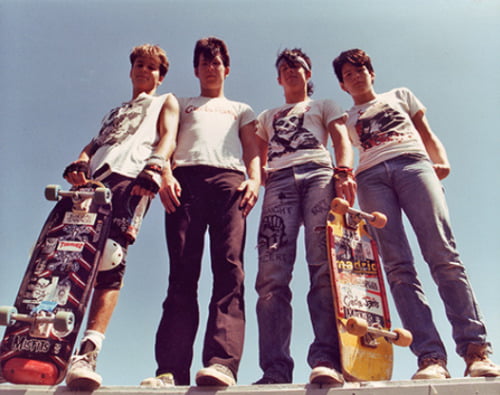
The 1980s were a time of excess, of neon colors and big hair, of cocaine and power suits. It was an era of change, of rebellion, of the new and the now. And at the heart of it all was skateboarding – the sport that embodied the spirit of the times, that gave voice to a generation of misfits and outcasts, that carved a path to a future that was both exciting and uncertain.
In the world of skateboarding, the 1980s were a time of explosive growth and change. New brands emerged, new styles were invented, and a whole generation of skaters rose to prominence. Let’s take a closer look at some of the key players, brands, and trends that defined this pivotal decade in skateboarding history.
80s Skateboard Brands and Skateboard Decks:
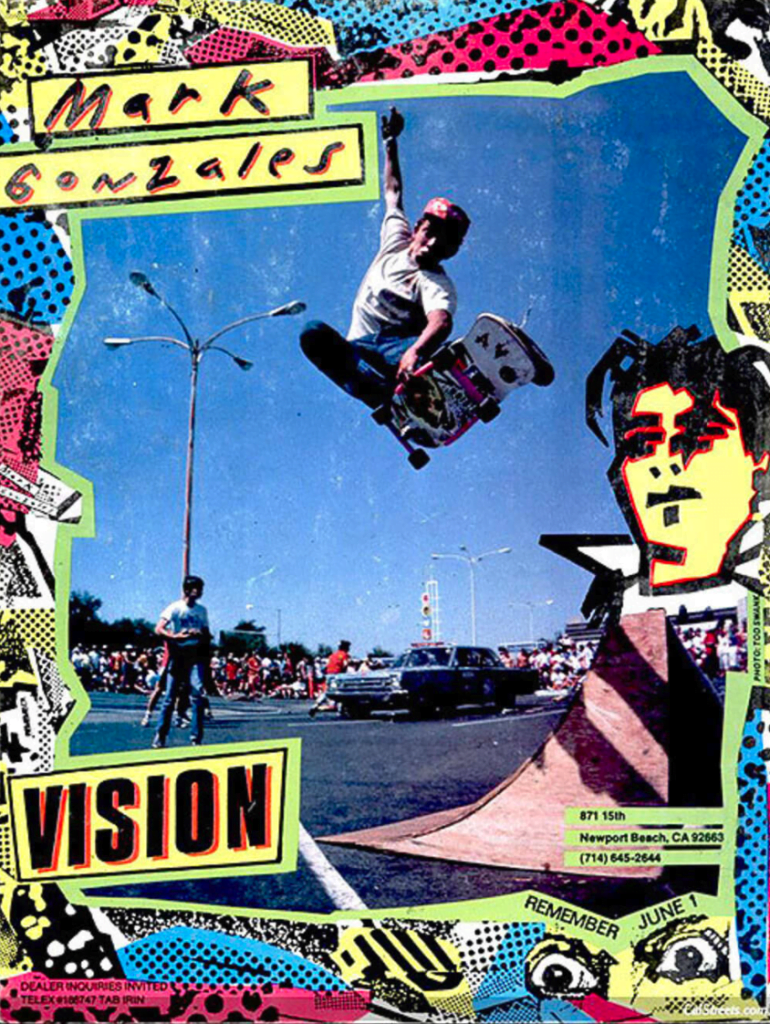
When it came to skateboard brands in the 1980s, there were a few big players that dominated the scene. Powell-Peralta, Santa Cruz, and Vision were among the most popular brands, known for their high-quality decks and distinctive graphics. Powell-Peralta, in particular, was a dominant force in the industry, with a team of talented skaters that included Tony Hawk, Steve Caballero, and Mike McGill.
Skateboard decks in the 1980s were characterized by their bold graphics and innovative shapes. Double kicktails, concave decks, and wider noses and tails became increasingly popular, as skaters sought to push the limits of what was possible on a skateboard. Graphics, too, were an important part of the equation – each brand had its own distinctive style, from the iconic skull and sword graphics of Powell-Peralta to the surreal and psychedelic designs of Santa Cruz.

80’s Skateboard Decks Worth Mentioning
- Powell-Peralta “Bones Brigade” – The Bones Brigade deck featured a colorful graphic by artist Vernon Courtlandt Johnson, featuring a skeleton hand clutching a sword. It was one of the most iconic skateboard graphics of the 80s, and helped to solidify Powell-Peralta’s place as a legendary brand in the industry.
- Santa Cruz “Rob Roskopp Face” – The Roskopp Face graphic was designed by artist Jim Phillips, and featured a menacing, skull-like face with a pair of devil horns. It was one of the most popular skateboard graphics of the 80s, and helped to establish Santa Cruz as a major player in the industry.
- Vision “Psycho Stick” – The Psycho Stick was one of the wildest skateboard graphics of the 80s, featuring a cartoon character with a huge head and an insane expression. It was a favorite of many skaters, and helped to establish Vision as a top brand in the industry.
- Zorlac “Metallica” – The Metallica deck featured artwork by heavy metal band Metallica, and was one of the most popular skateboard graphics of the 80s. It was a favorite of many skaters, and helped to establish Zorlac as a major player in the industry.
- G&S “Neil Blender” – The Neil Blender deck featured artwork by Blender himself, and was one of the most unique and creative skateboard graphics of the 80s. It was a favorite of many skaters, and helped to establish G&S as a major player in the industry.
- SMA “Natas Kaupas Panther” – The Panther deck featured a bold graphic by artist Jim Muir, depicting a snarling panther. It was a favorite of skater Natas Kaupas, and helped to establish SMA as a major player in the industry.
- Vision “Gonz Skull and Banana” – The Gonz Skull and Banana graphic was designed by artist Mark Gonzales, and featured a cartoon skull with a banana in its mouth. It was a favorite of many skaters, and helped to establish Vision as a top brand in the industry.
- Powell-Peralta “Tony Hawk Claw” – The Tony Hawk Claw deck featured a graphic by artist VCJ, depicting a claw tearing through the deck. It was a favorite of Tony Hawk himself, and helped to establish Powell-Peralta as a major player in the industry.
- Santa Cruz “Jeff Kendall Snake” – The Jeff Kendall Snake graphic was designed by artist Jim Phillips, and featured a serpent coiled around the Santa Cruz logo. It was one of the most popular skateboard graphics of the 80s, and helped to establish Santa Cruz as a top brand in the industry.
- G&S “Mark Rogowski” – The Mark Rogowski deck featured artwork by Rogowski himself, and was one of the most creative and original skateboard graphics of the 80s. It was a favorite of many skaters, and helped to establish G&S as a major player in the industry.
- Alva “Jef Phillips Evil Eye” – The Evil Eye deck featured a graphic by artist Jef Phillips, depicting an ominous, all-seeing eye. It was a favorite of many skaters, and helped to establish Alva as a major player in the industry.
- SMA “Tommy Guerrero Flaming Dagger” – The Flaming Dagger graphic was designed by artist Jim Muir, and featured a flaming dagger piercing the SMA logo. It was a favorite of skater Tommy Guerrero, and helped to establish SMA as a top brand
- Vision “Mark Gonzales Gargoyle” – The Gonzales Gargoyle graphic was designed by artist Mark Gonzales, and featured a gargoyle with a skateboard in its claws. It was one of the most creative skateboard graphics of the 80s, and helped to establish Vision as a top brand in the industry.
- Powell-Peralta “Mike McGill Skull and Snake” – The Skull and Snake graphic was designed by artist VCJ, and featured a skull with a snake winding through its eye sockets. It was a favorite of skater Mike McGill, and helped to establish Powell-Peralta as a major player in the industry.
- Santa Cruz “Jason Jessee Neptune” – The Jason Jessee Neptune graphic was designed by artist Jim Phillips, and featured the god of the sea holding a trident. It was a favorite of skater Jason Jessee, and helped to establish Santa Cruz as a top brand in the industry.
- Sims “Tommy Guerrero Panther” – The Panther deck was designed by artist Jim Phillips, and featured a snarling panther with the Sims logo in the background. It was a favorite of skater Tommy Guerrero, and helped to establish Sims as a top brand in the industry.
- Vision “Jeff Grosso John Lucero Mask” – The Mask graphic was designed by artist John Lucero, and featured a skull-like face with a mask over its eyes. It was a favorite of skater Jeff Grosso, and helped to establish Vision as a major player in the industry.
- Santa Cruz “Julie Westfall Lion” – The Lion graphic was designed by artist Jim Phillips, and featured a fierce lion with the Santa Cruz logo in the background. It was a favorite of female skater Julie Westfall, and helped to establish Santa Cruz as a brand for all skaters.
- Madrid “Mike Smith” – The Mike Smith deck featured artwork by Smith himself, and was one of the most creative and original skateboard graphics of the 80s. It was a favorite of many skaters, and helped to establish Madrid as a major player in the industry.
- Alva “Eddie Reategui” – The Eddie Reategui deck featured artwork by Reategui himself, and was one of the most colorful and eye-catching skateboard graphics of the 80s. It was a favorite of many skaters, and helped to establish Alva as a top brand in the industry.
- Vision “Gator” – The Gator graphic was designed by artist Craig Stecyk, and featured a menacing alligator with the Vision logo in the background. It was a favorite of skater Mark “Gator” Rogowski, and helped to establish Vision as a major player in the industry.
- Santa Cruz “Claus Grabke Joker” – The Joker graphic was designed by artist Jim Phillips, and featured a cartoon jester with the Santa Cruz logo in the background. It was a favorite of skater Claus Grabke, and helped to establish Santa Cruz as a top brand in the industry.
- Powell-Peralta “Steve Caballero Dragon” – The Dragon graphic was designed by artist VCJ, and featured a fierce dragon with the Powell-Peralta logo in the background. It was a favorite of skater Steve Caballero, and helped to establish Powell-Peralta as a major player in the industry.
- Alva “Dave Duncan” – The Dave Duncan deck featured artwork by Duncan himself, and was one of the most creative and original skateboard graphics of the 80s. It was a favorite of many skaters, and helped to establish Alva as a top brand in the industry.
- Zorlac “Jay Adams” – The Jay Adams deck featured artwork by artist Wes Humpston, and was one of the most iconic skateboard graphics of the 80s. It was a favorite of legendary skater Jay Adams, and helped to establish Zorlac as a major player in the industry.
These skateboard decks were not just pieces of wood – they were works of art, symbols of rebellion and creativity, and a means of expression for a generation of young people who were looking for something new and exciting.
Famous Skaters in the 80s:
Of course, no discussion of 1980s skateboarding would be complete without a look at the skaters who helped to define the era. Tony Hawk, Steve Caballero, and Mike McGill were among the most famous skaters of the decade, known for their innovative tricks and their distinctive styles.

Hawk, in particular, was a force to be reckoned with – he was the first skater to land a 900-degree spin, and he helped to popularize the “vert” style of skateboarding, in which skaters perform tricks on the walls of halfpipes and other structures. Caballero, meanwhile, was known for his smooth style and his ability to perform a wide range of tricks, while McGill was famous for his invention of the McTwist – a trick that involves a 540-degree spin while grabbing the nose of the skateboard.
10 Skaters from the 80’s that influenced the movement
- Tony Hawk – Hawk was one of the most influential skaters of the 80s, known for his powerful style and his ability to perform a wide range of tricks. He was the first skater to land a 900-degree spin which made him a household name.
- Steve Caballero – Caballero was known for his smooth style and his ability to perform tricks that no one else could. He invented several signature moves, including the “Caballerial” and the “fakie 360 flip”, and was a dominant force in both street skating and vert skating.
- Mike McGill – McGill was a key member of the Powell-Peralta skate team, and his smooth, powerful style helped to define the skateboarding culture of the era. He was known for his invention of the McTwist and his ability to perform a wide range of other tricks.
- Natas Kaupas – Kaupas was a pioneer of the “street skating” style that would become so popular in the 1990s. He was known for his technical skill and his ability to perform tricks on the streets that had never been done before.
- Mark Gonzales – Gonzales was known for his innovative, offbeat approach to skateboarding and his ability to perform tricks that no one else could even imagine. He was a true original, and his influence can still be felt in the skateboard culture of today.
- Christian Hosoi – Hosoi was a flamboyant skater who helped to popularize the “vert” style of skateboarding. He was known for his high-flying moves and his signature “Christ Air” trick.
- Lance Mountain – Mountain was a versatile skater who was equally at home on the streets and in the skateparks. He was known for his smooth style and his ability to perform a wide range of tricks.
- Rodney Mullen – Mullen was a technical wizard, known for his ability to perform a wide range of flatland tricks. He invented several signature moves, including the “kickflip” and the “heelflip”, and was a key figure in the development of modern street skating.
- Tommy Guerrero – Guerrero was a smooth, stylish skater who helped to popularize the street skating style. He was known for his signature move – the “frontside ollie” – and for his innovative use of urban architecture in his skating.
- Duane Peters – Peters was a rebellious skater who embodied the punk rock ethos of the era. He was known for his aggressive style and his signature move – the “acid drop” – and helped to inspire a generation of skaters to push the limits and defy convention.
Skate Videos in the 80s:
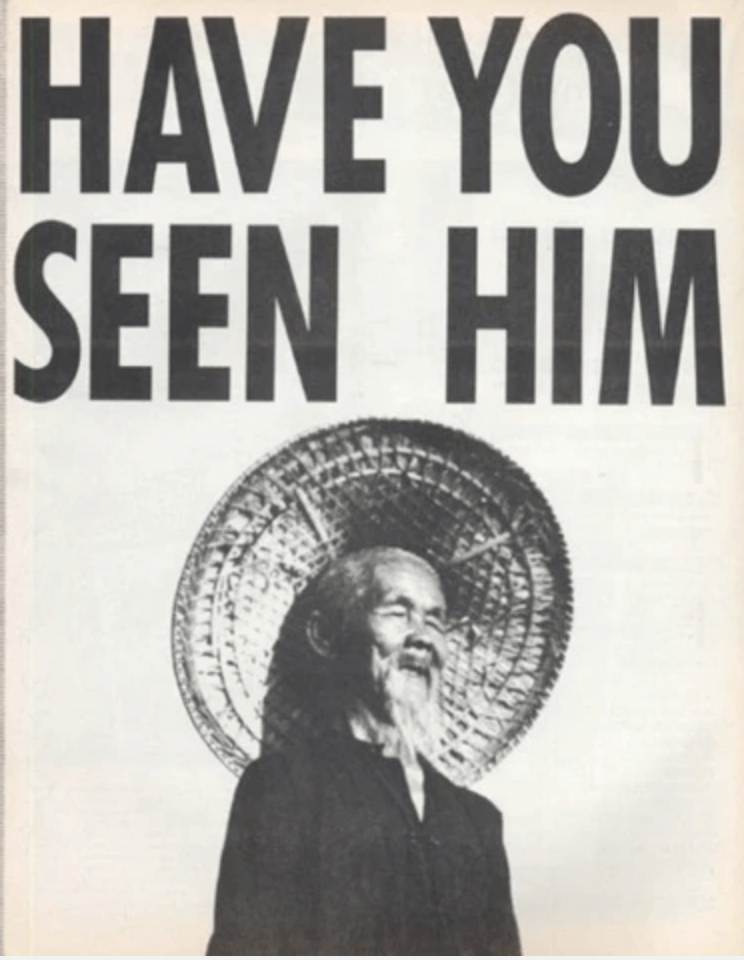
Skate videos were an essential part of the skateboard culture in the 1980s, capturing the energy, the creativity, and the sheer madness of the skateboarding scene. These videos were not like the slick, polished productions of today – they were gritty, raw, and unfiltered, capturing the essence of what it meant to be a skateboarder in a time of chaos and change.
Some of the most iconic skate videos of the 80s were produced by Powell-Peralta, the dominant brand in the skateboarding industry at the time. Their videos, including “The Bones Brigade Video Show” and “Future Primitive”, were groundbreaking in their use of music, graphics, and innovative camera angles to showcase the talent and creativity of their team of skaters. These videos helped to define the skateboarding culture of the 80s, inspiring a generation of skaters and solidifying Powell-Peralta’s place as a legendary brand in the industry.
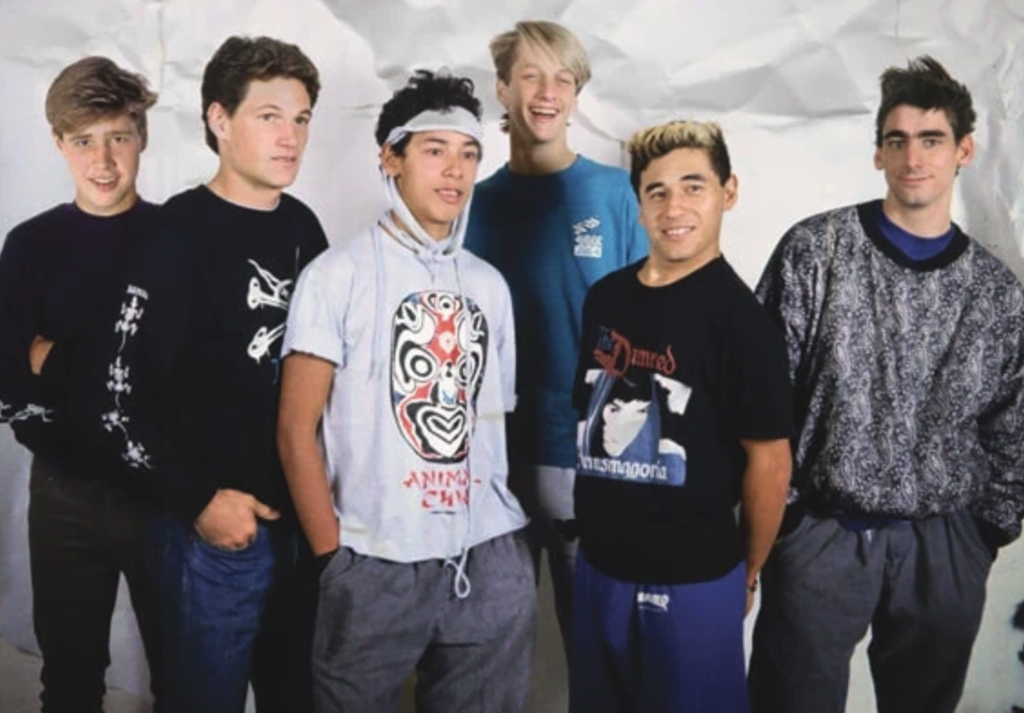
Other notable skate videos from the 80s include “H-Street’s Shackle Me Not” and “Santa Cruz’s Streets on Fire”. These videos featured some of the most talented skaters of the decade, including Danny Way, Natas Kaupas, and Rob Roskopp, and helped to popularize new styles of skateboarding, such as freestyle and street skating.
But perhaps the most significant aspect of skate videos in the 80s was the way they captured the energy and ethos of the skateboard culture itself. These videos were not just showcases for tricks and stunts – they were portraits of a lifestyle, a subculture, and a community that was all about pushing the limits and breaking down barriers. They were a way for skaters to connect with each other, to share their experiences, and to express their individuality in a world that often seemed hostile and indifferent.
The 1980s were a time of explosive growth and change in the world of skateboarding. New brands emerged, new styles were invented, and a whole generation of skaters rose to prominence. Through it all, skateboarding remained a symbol of rebellion and self-expression, a way for young people to carve out their own path in a world that often seemed hostile and unforgiving.
As we look back on the 1980s, we can see how skateboarding helped to shape the culture and values of a generation. It was a time of creativity, of risk-taking, of pushing boundaries and exploring new possibilities. And even as the decades have passed, the spirit of skateboarding remains as strong as ever – a reminder that, no matter what the future holds, there will always be those who are willing to carve their own path and push the boundaries of what is possible. The legacy of the 1980s skateboarders lives on through the modern skateboard culture, and the contributions of Tony Hawk, Steve Caballero, and Mike McGill continue to inspire new generations of skaters.
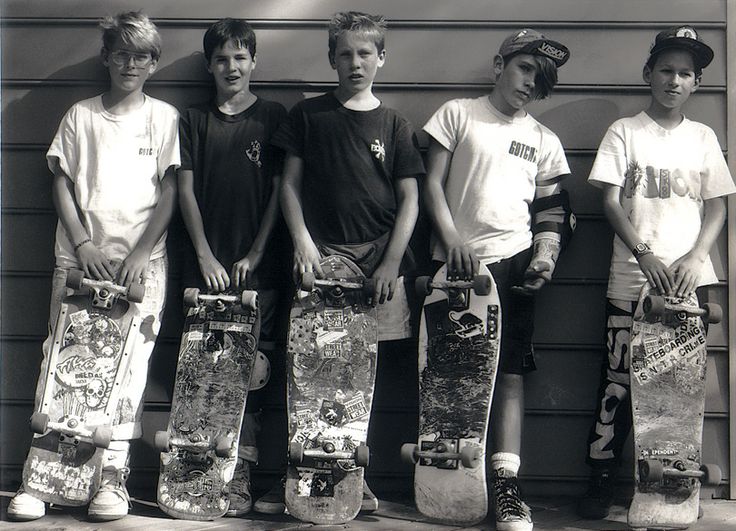
In the end, it was the combination of innovative board designs, bold graphics, and talented skaters that made the 1980s such a defining decade in the history of skateboarding. From the neon colors and big hair to the explosive energy of the skate parks, it was a time when anything seemed possible – and for those who embraced the skateboard culture, it was a time of freedom, expression, and endless possibility.
As Hunter S. Thompson once said, “The edge… there is no honest way to explain it because the only people who really know where it is are the ones who have gone over.” And in the world of skateboarding, that edge was constantly being pushed, challenged, and redefined – creating a culture that continues to inspire, challenge, and excite people all over the world.
So, whether you’re a long-time skater or simply someone who appreciates the artistry and innovation of the skateboard culture, take a moment to appreciate the legacy of the 1980s – a decade that helped to shape skateboarding into the dynamic, ever-evolving sport that it is today.







Leave a Reply